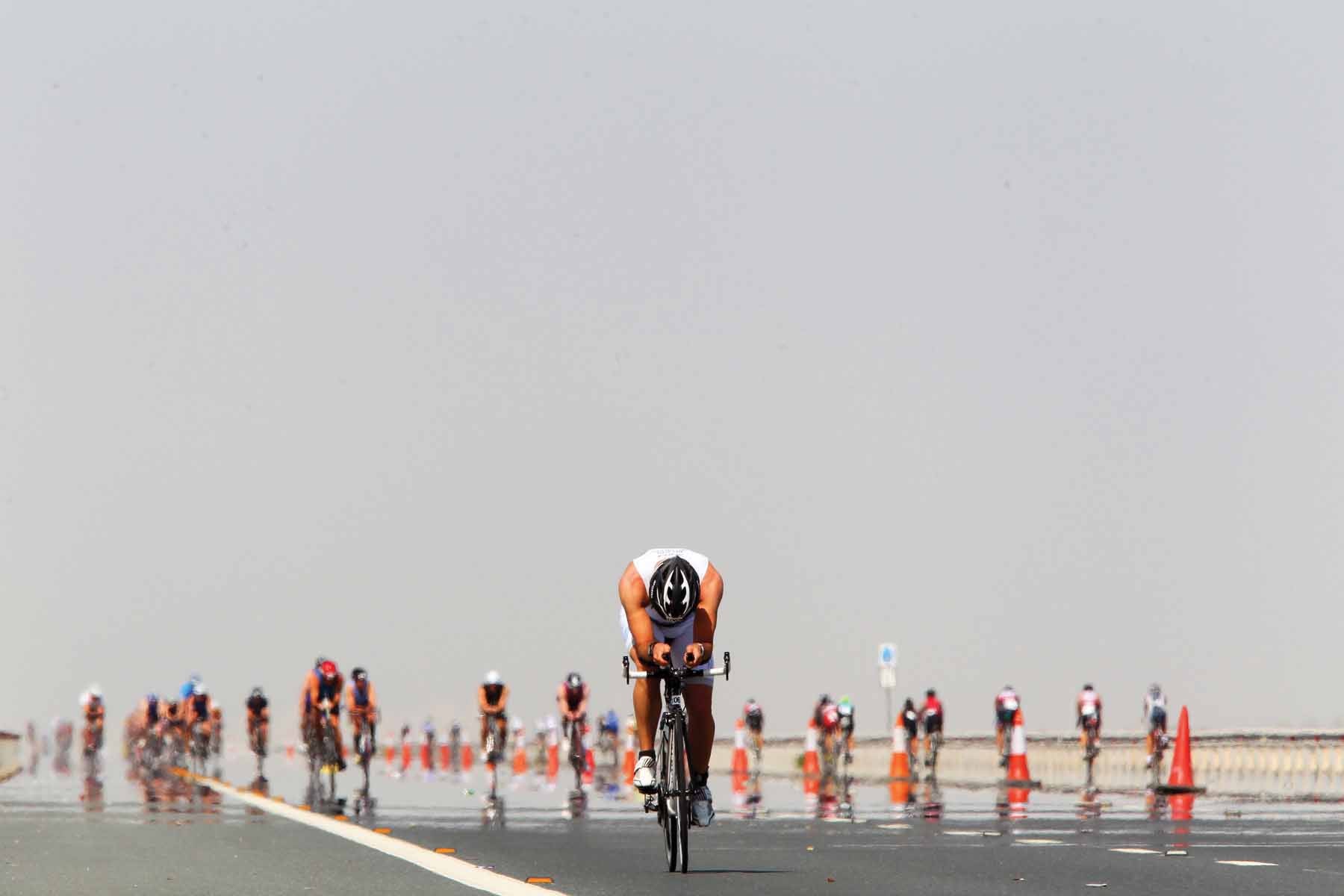Preparing For A Race In An Unfamiliar Climate

Photo: Thierry Deketelaere / Endurapix
How do you adapt your nutrition plan for a race in a climate that’s different than where you train? Here’s what you need to know.
Those of us triathletes who are not fortunate enough to live in a year-round warm-weather climate are relegated to indoor cycling and bundled-up running in frigid temps for several months each winter. Many of us select early-season races by location—a great excuse to travel somewhere warm in May. Then, as race day approaches, we realize our bodies will not be acclimated to the heat, and that our nutritional needs will be very different and intake must be adjusted. But how?
I have done early-season warmer races, including Ironman 70.3 St. Croix and Wildflower Long Course. I remember how hot I felt in comparison to my home training climate at that time of year. When traveling from a cold to warm climate, the sudden temperature increase will predispose your body to overheating sooner and cause your sweat rate to increase as your body works to keep itself cool. Unless you have the luxury of a full two-week acclimatization period to train in the race climate before race day (wouldn’t that be great?), you will need to adjust your nutritional plan, goal pace and expectations, as cooling the body will divert needed blood and oxygen from both your muscles and gut (read: slowed performance and decreased digestion).
To feel your best in a hot environment, you will need to increase and pay close attention to your intake of both fluids and electrolytes. Plan your needed fluid intake based on hot-weather sweat tests from last year. If you don’t have that information, know that sweat rates vary widely, but the average endurance athlete will sweat 24–32 ounces per hour, and your winter sweat rate can double during an acclimation period, so do not rely on what you were drinking during cold-weather training. You will also need additional electrolytes as your body works to keep itself cool. I recommend using electrolyte tabs in addition to your sports drink to ensure you meet those needs. Finally, your max calorie absorption rate will be somewhat decreased, again due to blood diverted to the skin for cooling, so you’ll want to slightly decrease your calorie intake goal, and choose mostly sports drinks for calories and extra fluid. Save the solid foods for cold-weather training and racing, or races later in the season when you are acclimated to the heat and able to better absorb calories. Two final tips: Wear a visor to keep the sun off your face while allowing your head to cool, and dump cool water over your head during the race.
If you live in a warm climate and plan to race in a colder climate (as my California triathlete friends occasionally do with East Coast-based me), the opposite is true. Your calorie needs will be the same in the cold as they were in the heat, but you will need less total fluids and electrolytes due to your lower sweat rate. In this case, be conscious of taking in adequate calories from gels or solids as you will be inclined to drink less total fluids. The caveat here is that you warm-weather folks need to not overdress. You can easily tell the warm-weather native running in New York in May—they are wearing all their “winter” gear while we natives are thrilled to be running in shorts in the pleasurable 50-degree “heat.” Overdressing will cause you to overheat and sweat more—increasing your needs for both fluids and electrolytes, but your brain may still tell you, “It’s cold here,” and you will then tend to overheat, under-hydrate and can become dehydrated. So, dress in layers you can remove as you start to sweat and carry solids to ensure adequate calories for longer races.
RELATED: How To Train And Race In The Heat
Cold climate to warm race
– In addition to your sports drink, use electrolyte tabs to keep body cool
– Slightly decrease calorie intake and get most calories from fluids
– Wear a visor (not a hat)
– Dump water over head during race
RELATED – True Or False: Winter Running Burns More Calories
Warm climate to cool race
– Aim for the same amount of calories as in the cold
– Take on less total fluids and electrolytes than during training
– Carry solid foods
– Dress in layers
Lauren Antonucci, R.D., is a board-certified specialist in sports dietetics, three-time Ironman finisher and the founding director of Nutrition Energy in New York City.